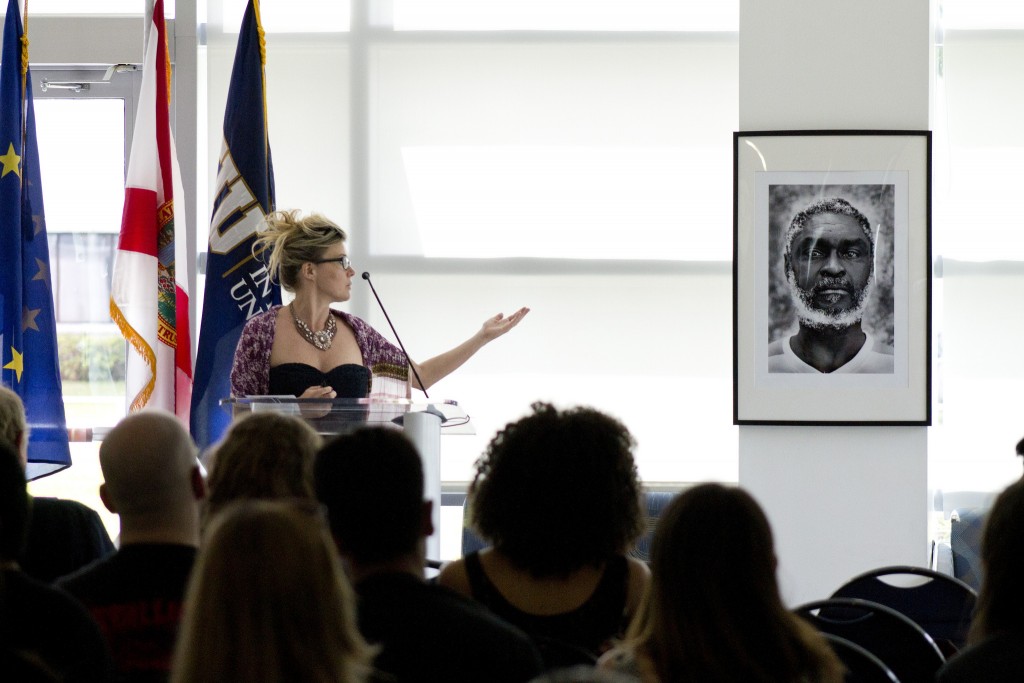Czech photographer’s images of stark ‘Cuban reality’ now on exhibit
Source: FIU News www.news.fiu.edu / By Nicole Montero /

Hana Jakrlova never planned to go to Cuba, let alone to use her profession and passion as a photographer to document the realities of a communist island.
“I think Cuba is somewhat forgotten,” she said. “Everyone is always talking about it… But I noticed that I never really saw images of Cubans’ realities, and I was curious about it, so I went to Cuba and I traveled around the country by myself.”
On the island, Jakrlova – an internationally-exhibited and published Czech artist – took photographs of native Cubans, showcasing the unique stories of citizens living beyond the view of tourists and other visitors.
Upon her return to the United States, she compiled a collection of her best works.
The exhibition, La Otra Cuba [The Other Cuba], was installed at FIU’s Steven J. Green School of International and Public Affairs last month. The Václav Havel Program for Human Rights and Diplomacy hosted a talk with the Czech photographer to inaugurate the opening of her exhibition.
“This is first time we have used the Green School building in this way, as an exhibition space for powerful images that tell a unique story,” said John F. Stack, dean of the Green School, at the presentation. “I would like to acknowledge the Knight Foundation for their generous support of the exhibit. We are a new school and we are constantly pursuing new ideas and ways of looking at the world. The Václav Havel Program for Human Rights and Diplomacy is just one example of this.”
Jacques Rupnik, a European scholar and former advisor to Václav Havel, the first president of liberated Czechoslovakia, and Martin Palous, director of the Green School’s Václav Havel Program and former ambassador for the Czech Republic to the United States and to the United Nations, also participated in Jakrlova’s talk.
Among other things, Rupnik commented on democratic transitions and the fact that every country is unique, as well as the relevance of the Havel legacy for today’s Cuba and the role of international solidarity in democratic transition.
“I’m glad my photographs from Cuba organized a connection to Rupnik, who I admire together with Martin Palous, who knew and worked with Václav Havel,” said Jakrlova. “Havel was one of my heroes and the Cuban question was a very relevant part of his heritage because he was a true democrat. He spent years in prison and really took part and came up with action, rather than just being an academic. He was vocal after the revolution and, after he became president, expressed several important things about Cuba.”
During her time on the island, Jakrlova traveled to different areas of the region, including Havana and Trinidad. Every Sunday, she attended demonstrations for the Ladies in White, a peaceful opposition movement in Cuba founded by women to protest imprisonments.
Some of her photographs depict these protests.
“I got really close to what Cuban reality is,” said Jakrlova at the presentation. “I was really interested in photographing people and the way they live, which is a very poor way and many people don’t get to see this. Cubans are very open and spontaneous and were very often happy to [see] me. They always opened their doors to me.”
La Otra Cuba will remain on display at the SIPA Café until May 31.

